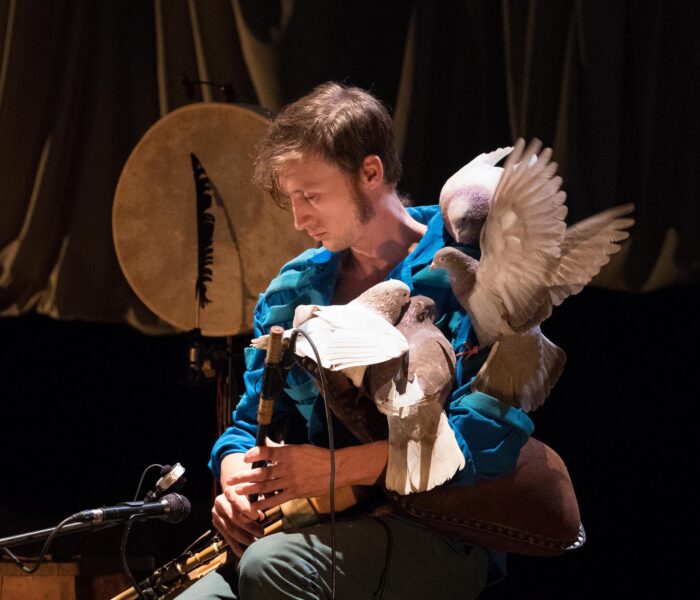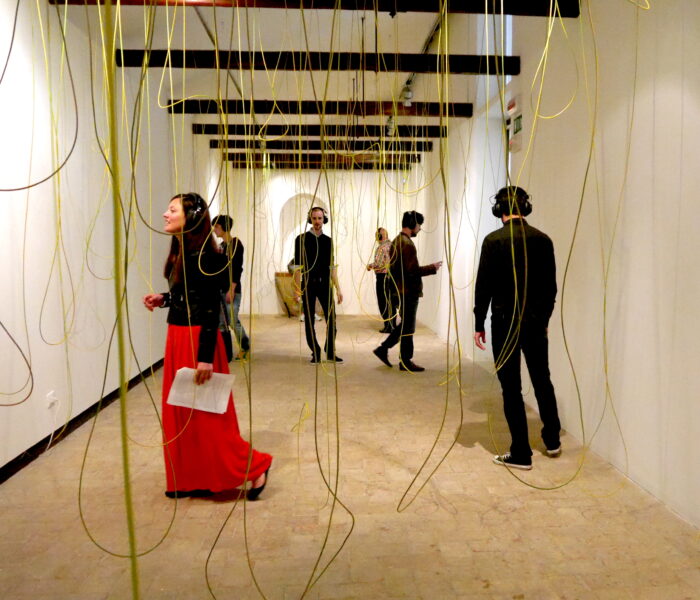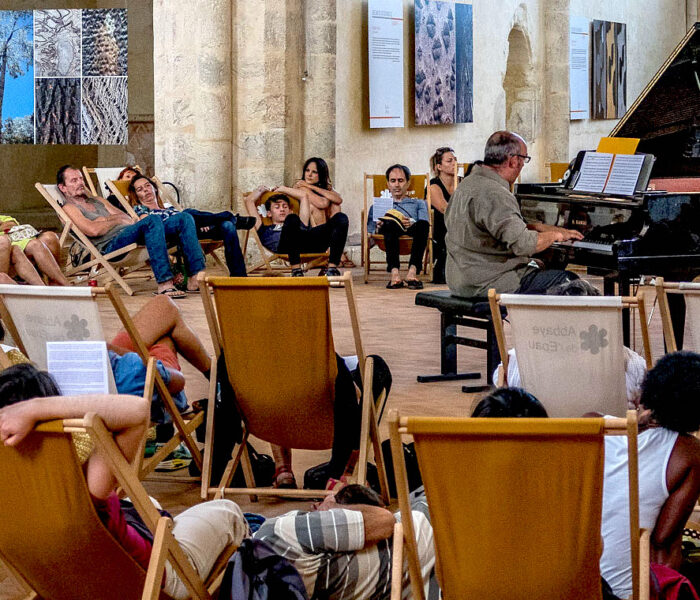Do we need to reinvent the form of the concert? Is it necessary to explore new relationships between artists and audiences? And if so, how? And why? Five programmers from different worlds and countries debate this question, which still drives the music scene today.
Joining us for this round table discussion are:
- Marie Jeanson and Denis Schulerwho co-direct Archipel in Geneva, a festival created in 1992, dedicated to research music and sound creation.
- Michaël Dian, artistic director of the Festival et de l'Espace Culturel de Chaillol, founded in 1997 in the Hautes-Alpes region, whose program of classical, jazz, contemporary, traditional, improvised and written music takes over numerous venues, villages and natural sites in a rural area throughout the year.
- Frédéric Mazelly, director of programming at La Villette in Paris, a public, multi-disciplinary establishment where music, dance, theater, visual arts, heritage exhibitions, workshops, etc. intersect.
- Finally, in a very different register, Kalas Liebfriedan independent artist and curator based in Munich, whose works, performances and programs are at the crossroads of sound art, music and the art world. He is a member of the Rosa Stern Space e.V. art association in Munich, and since 2022 has been the founder of the interactive platform "Fragments of Sonic Extinction", which since May 2023 has also taken the form of a festival at the Zirka Center, also in Munich.
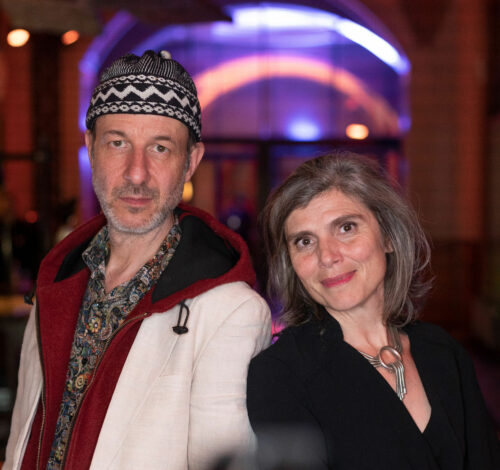
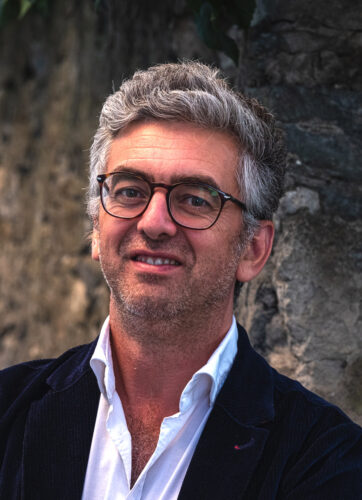
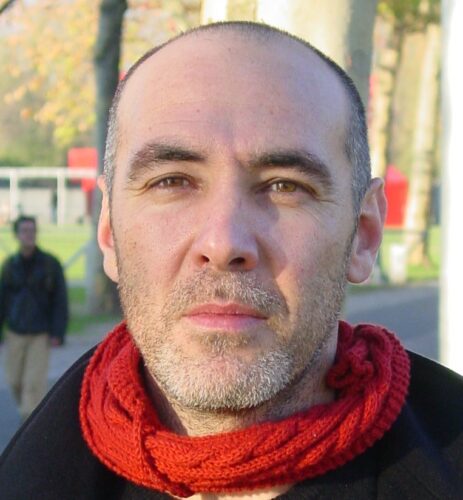
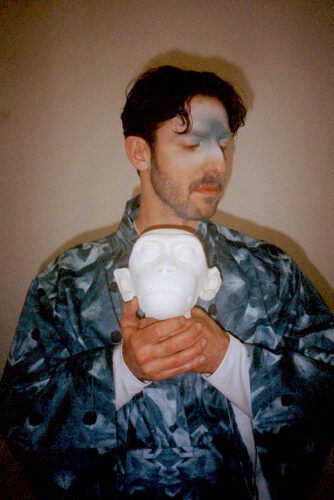
Do you feel that the artist's frontal relationship with the audience, in an Italian-style theater, is sufficient? In need of revision? Or outmoded?
D. Schuler (Festival Archipel): It's a question that touches us because it's at the very heart of our festival. The question of the device and the audience's experience are paramount. When the audience is immersed, when it finds itself surrounded by the musicians, or vice versa, when the audience can move around, lie down, possibly sleep, it's an enriching experience in itself, because it's potentially new. What's more, the audience puts itself in a specific listening condition. Basically, in this type of concert, everyone pitches in! The audience participates, it's also a player in this creation.
M.Jeanson (Festival Archipel): Naturally, we also have to think about the position of the listener, which is fundamental to our projects. We're making a festival for the public, without pandering to them in terms of programming. It's first and foremost a collective experience.
M.Dian (Festival Chaillol) : In my opinion, the front-of-house system is neither obsolete nor in need of replacement. I don't think we should turn our backs on two centuries of broadcasting in a classical format, where the artists are on stage in the light, and the audience in the half-light, listening in silence. These are privileged moments, which I value enormously, as do the audience. The important question to ask is: what is the quality of the relationship between artists and local residents? I'd say that this system needs to be complemented by spaces for interaction between artists and local residents, people who at some point choose to be their audience. This point of passage is very important. The "public" doesn't exist in itself. There are people living in an area who, having spotted a proposal, find themselves able to cross the threshold of a venue or performance space.
K.Liebfried (artist-curator): In an age where eclecticism is the order of the day, there's no such thing as an outmoded form, but it's obvious that you can't reduce your thinking, your reflection, to this one frontal relationship between audience and artists. What about pieces without an audience? Or when the audience constitutes the work itself? Rather than frontality, perhaps we should be thinking about setting up a kind of playground, offering a form of equality, and multiple perspectives... I'm always asking myself what medium is appropriate for a certain concept or narrative: the medium defines the relationships between the different components and the tensions that animate them. Keeping these tensions active and formative, keeping these perspectives open, creates a shared field of responsibility in which artists, performers, audiences, objects and even the surrounding architecture resonate and combine.
M. Jeanson (Festival Archipel) : We've been hiring scenographers since the early 2000s. The work we put the most research and effort into was a five-hour quartet by Morton Feldman. We'd noticed that the floor was squeaking, and we realized that people had to be able to get out without disturbing everyone, so we hired someone to create a specific scenography, with a stage, carpeting everywhere, cushions, deckchairs and chairs, and a sort of carpet line so that the audience could get out without making any noise. It was one of the first times this had been implemented at our venue, and from then on, all our concerts began to be designed in this way.
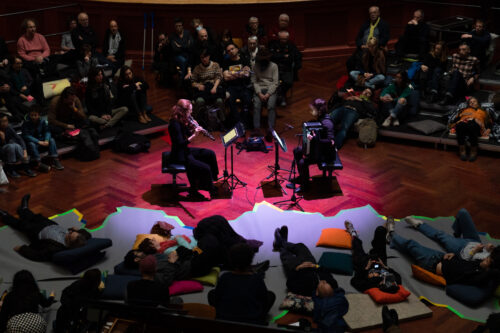
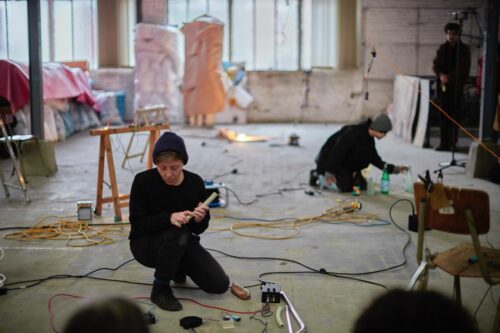
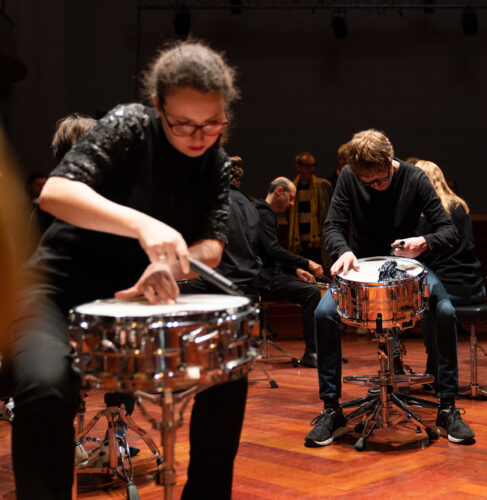
D. Schuler (Festival Archipel): We've done a lot of intimate concerts, like in 2021 with Gwen Rouger and his caravan for one person at a time, aural walks... That's our DNA. Among my more personal experiences, I could mention my work withEnsemble Vide, which is a Geneva-based structure that imagines projects with guests for specific projects. So there's no structured ensemble of musicians at the heart of this project. For the past ten years, we've been organizing concerts in industrial buildings that have the particularity of having five-storey passageways and a 500m2 inner courtyard. The idea is to say to the audience, you can take a chair if you like, sit down somewhere, but you can also walk around during the concert through the floors, moving vertically or horizontally, and thus perceive great differences in listening. People wandering around in this way create a completely individual and creative sound experience, in which perception is constantly modified.
Echo from Association Ensemble Vide on Vimeo.
K. Liebfried (artist-curator): Generally speaking, I find it interesting that works can adapt, remain fluid and create a kind of dialogue with their setting and environment. In this way, the pieces take on an interactive, sculptural and spatial dimension, use atypical devices and break down walls - it's all relevant if there's a good reason to do so. When you attend a Sunn o))) concert, for example, and come face to face with the real walls of sound created by the band, you can already sense that there's something going on beyond the listening stage. And if the performance takes place in a church, for example, it becomes transcendental.
I come from the world of performance and audiovisual arts. For each piece, it's essential to take the site into account and create a specific scenography. Of all venues, museums are certainly the least suited to sound - unless you use the fifteen seconds of reverberation in their space. What's more, they have no infrastructure for rehearsals. So we have to work with museums to come up with different, specific types of staging.
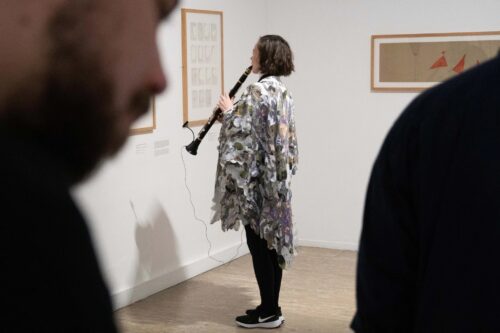
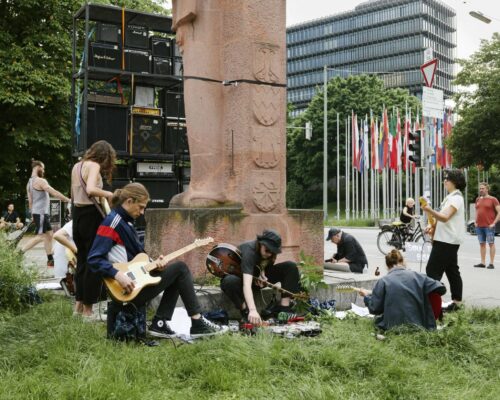
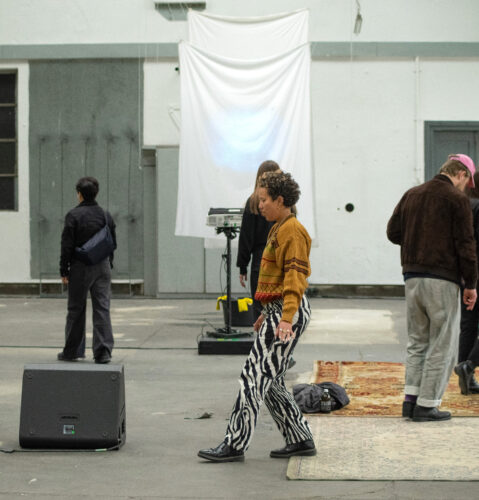
Kalas Liebfried: Ports in Transition feat. Jonas Yamer and Accomplices, 22/07/2020 at Lenbachhaus Munich (excerpt) from Kalas Liebfried on Vimeo.
M. Dian (Festival Chaillol): As for us, our listening situations (that's the term I use) are highly varied, with slightly different configurations, but always respectful of the artistic gesture. We're completely itinerant. So we don't have any venues. We take on non-dedicated venues, churches, chapels, village halls, school classrooms, castles, heritage sites of varying importance. In particular, we developed this during the period of the health crisis, which led us to invest in places and spaces with acoustic or landscape qualities, or an environment conducive to a quality relationship between artists and audiences. With a jazz trio, for example, we took over a local resident's orchard, which gave us a very generous welcome. We set up a small stage there, and people didn't have to sit down; they just arranged themselves as they wished, with blankets, deckchairs and other arrangements.
We've also organized what we call " Musique au naturel" events, for which the team at the Chaillol cultural center identifies particularly evocative, poetic places in the area. It could be an undergrowth, a promontory with a rocky outcrop that acts as natural protection. Or, more simply, a village square, or the forecourt of a small chapel in a secluded hamlet. In such spaces, as soon as you set up a listening device, things go wonderfully well.
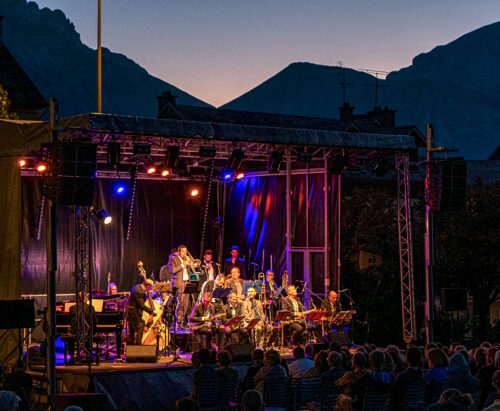
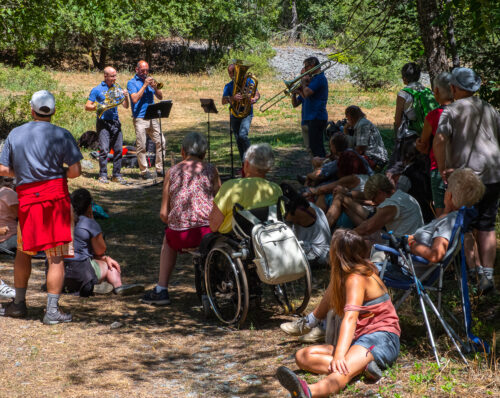
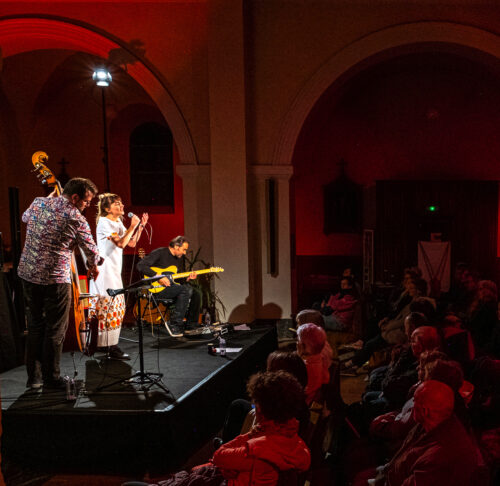
Over the past twenty years or so, do you find the new concert forms and scenographies that have emerged interesting? For example, audiovisual concerts, musical siestas, intimate concerts, sound and music installations, headphone listening devices, concerts with spatialized sound...
M. Jeanson (Festival Archipel) : I've been organizing concerts for nearly thirty years, and I have to admit that I've rarely seen elsewhere anything as varied as what we organize with Archipel, or what Jean Prévost was already doing before us. Very quickly, the festival turned to sound installations, different venues, events in the open air or in the public space, and of course I see this from time to time elsewhere, but with us you can find more than a dozen different devices in a single edition. However, I remember the Angelica festival in Italy, in the early 2000s, where the director set up a simple rectangular room with two loudspeakers, where people could go by themselves and play the music they liked. I drew inspiration from this setup for our listening room, which could be defined as a kind of self-service listening room, but which is also an acousmonium (a loudspeaker system and orchestra dedicated to the broadcasting of electroacoustic music, NDR). I've also programmed events with the Arsenic theater in Lausanne, particularly sound installations set up in the theater's fallout shelters. In Switzerland, such shelters could be found in every public place. The attempt to offer sound installations in public spaces was a response to the desire to reach a wider audience, or a new one, for example on the Plainpalais plain in Geneva, a large area usually used by circuses and funfairs. It's always the same idea, to be in a kind of freedom, to wander, to take charge while empowering the listener, in a playful, active, pleasant way. It's always well thought-out, scenographic, aesthetic, taking into account the audience's place and their active listening.
F. Mazelly (La Villette): The relationship we have with an artistic object depends on so many things... Sometimes a simple piano/voice set-up can be more stimulating than a concert with the latest screens and multicasting. At the end of the 1990s, I was seduced by the Séances d'Écoute experience, conceived and programmed by artist Alexandre Périgot, in a working-class district of Aubervilliers, near Paris. The audience was placed in the dark, lying down, at the heart of the listening experience - ideal conditions for experiencing a concert in the best possible conditions. It was a small space, modest even, but perfectly suited to the discovery of artists who were very innovative for the time, such as Christian Fennesz, Funkstörung, Robert Henke...
Later, there were some interesting concert programs(Bernard Parmegiani, Curtis Roads, Murcof, I:Cube, NDR) in atypical venues such as La Géode and the Planetarium at the Cité des Sciences in Paris, in which we sometimes took part. But I have to confess that since the invention of acousmoniums, or Ryoji Ikeda's audiovisual live performances, I haven't seen much that's new in recent years in the way of listening devices or concerts. Of course, there have been many technical innovations, in terms of diffusion and spatialization, and the use of LEDs, for example, but from an aesthetic point of view, that's not the case. It's hard to go beyond geometric abstraction.
In addition to this type of performance, you also have collaborations between musicians and visual artists. Xavier Veilhan, for example, has worked with composers and sound specialists at the Venice Biennale, bringing something really new to the table. We've also seen this with Dominique Gonzales-Foerster, Philippe Parreno and Saâdane Afif, all from the same generation. But they've come up with installations or devices that aren't really intended to be listening devices. Rather, they are works of visual art in dialogue with the music, which can nevertheless lead the audience into a musical environment. Music is added to works that combine several elements, which may come from literature, the fine arts or cinema. This is also the case with some of Christian Marclay's installations and devices. His twenty-four-hour film, The Clock, for example, demonstrates a highly musical approach. At La Villette, we haven't shown many collaborations of this kind. I'm thinking, however, of two installations, one by Ryoji Ikeda and the other by choreographer William Forsythe, which functioned in somewhat opposite ways, one horizontal, the other vertical, one in black, the other in white, one in music, the other in silence - a contrast that inspired me greatly. Basically, this type of installation allowed us to bypass the form of the concert, but there's nothing really new here. And when I see that vinyl records are once again filling the bins of record shops, and that musical theater is enjoying a certain revival, including among young audiences, I tell myself that the history of cultural practices is finally coming full circle. As for concerts, I'm inclined to favor smaller formats rather than large-scale events, but alas, the trend is not in that direction.
Mr Dian (Festival Chaillol): I've observed two phenomena. For a number of years now, national stages have been inventing out-of-home events, such as Les Excentrés, created by La Passerelle in Gap, Par Les Villages, created by the Théâtre du Briançonnais, or Les Traversées at the Abbaye de Noirlac. These initiatives bear witness to a new social demand. People don't always want to go into an established venue. We also want artists to take over a non-dedicated place, and transform it, changing the relationship we have with that place, through their presence and their gesture. These schemes for touring venues dedicated to creation have been around for a long time, but they're developing more and more. Another thing I've noticed is the hybridization of cultural resources in the same space. I'm a spectator, curious about everything, but my job is to produce and accompany music. And so what I'm seeing is that music is increasingly finding itself in configurations with other forms of expression, and even with skills other than artistic ones. For example, some festivals are working on the relationship between culture and agriculture, between landscape, environment and artistic gestures. I'm thinking in particular of a festival related to ours, the Nuits d'été, above Chambéry, near Lac d'Aiguebelette, which organizes many itinerant events that are not limited to artistic proposals. This hybridization of cultural resources, understood in the broadest sense and not just as artistic, means that local residents can be recognized for their ability to intervene, to propose something, which is not necessarily artistic, but cultural. I'm thinking, for example, of the solidarity canteen we set up around the roulotte and a touring concert by Jeanne Bleuse, a performer of a highly specialized harpsichord-piano repertoire. It was a great moment of conviviality. We also presented a concert in a shared garden, for people who are a little vulnerable, which brought together nearly two hundred people from a wide range of sociological backgrounds. Almost a third of those present at the concert had also taken part in the event, cooking, tending the garden, preparing the horses and welcoming the children. This approach has a lot to do with the question of cultural rights, which have existed in French law since 2015, and which invite recognition of the capacities to act, the cultural capacities of all people and not just artists. Mind you, we're not saying that all the inhabitants of a territory are artists, but rather that they have cultural references that can be mobilized.
Do you think it's important to explore other ways of welcoming the public? Are you making any special efforts to reach out to new audiences? What are these efforts? Who are these audiences?
M. Dian (Festival Chaillol) : We're a "scène conventionnée d'intérêt national", so our activity is now continuous. We start the season around September-October with residencies in creation, production and cultural action. The artists are based in the region, and are paid for it, which generates numerous opportunities for interaction, meetings, radio broadcasts, etc. Then, between January and June, we organize three concerts at the end of each month, preceded by numerous cultural events in three towns in three valleys. For us, it's a question of ensuring that this type of production takes place over the long term, and not just on a single date, before the artists leave to play elsewhere in France or abroad. And then in the summer, during the festival, we program a month of concerts, meetings and workshops. Nowadays, even the big summer festivals have a winter season, with year-round activities, and we can no longer justify the public authorities' commitment to a few days of festival. More and more, there's a need for a long-term commitment to a region, so that the event isn't just a territorial marketing tool. And I think there's also a social demand on the part of local residents to be involved, to have points of contact with the artists. Today, this is particularly encouraged by the French government and local authorities. However, it's hard to get the national media to focus on these long-term commitments, which have less immediate impact.
K. Liebfried (artist-curator) : In 2022, I created "Fragments of Sonic Extinction", an interactive digital platform that documents and explores the issue of the past, present and future loss of natural sounds, due to climate change and the Anthropocene. The decision to create a dynamic sound website and to commission international artists to create new works on related subjects allowed me to go beyond a simple individual and artistic practice. Because of the complexity of the theme, I felt the need to build a global network of artists and develop an accessible, interactive archive of knowledge and resources for future audiences. Today, the platform's audiences have evolved considerably. The more varied the contributors, angles and issues addressed, the more diverse the audience, beyond an initial network of artists.
D.Schuler (Festival Archipel): Children are one of the main new audiences we try to attract. We love working with and for children, whether they're on the instrument side or the audience side, and giving them the freedom to experiment in their own way with what a sound project is, whether it's a concert or an installation. To this end, we've created a playroom, or rather a space we've called a playroom, in which children can run around, play games that have nothing to do with music, but also be in a relationship with the listener that's as free and fun as possible. These programs also enable parents to discover this music, notably through sound installations.
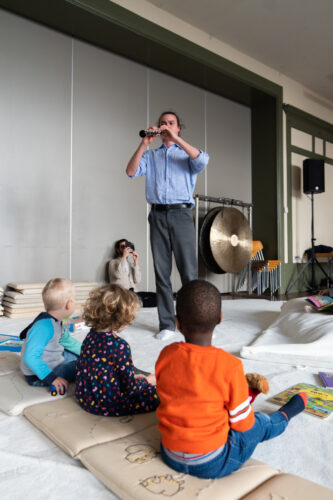
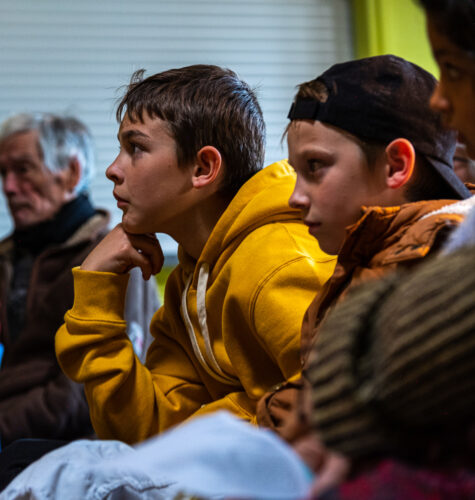
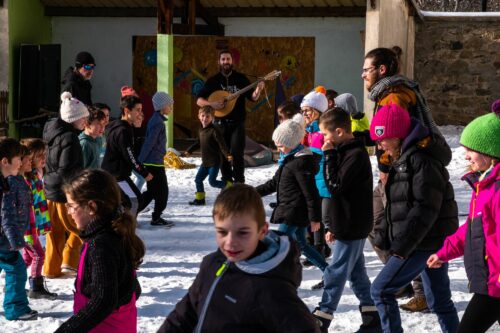
Mr Jeanson (Festival Archipel) : Our administrator, Kaisa Pousset, is also in charge of mediation. She does a lot of work with schools, conservatories and nurseries, just before the age of eleven or twelve. I'm a great believer in this kind of discovery at that age, even if they later reject the music as teenagers. The pricing policy also plays a role in access. We don't want our programming to be designed to please - that's not what research music is all about - but we do try to ensure that there are no barriers to access. The entrance fee is ten Swiss francs, which is equivalent to around ten euros, even when you come to hear the Basel Sinfonietta orchestra. There are also a number of free events. We also try to cross the generations within the team, to bring in new audiences, like the electro one for example. Ten new people attending a concert is already a victory.
D.Schuler (Festival Archipel): As part of this process of reflection, we hardly ever give out invitations anymore. We've stopped with this system where more than half the audience are friends and come for free, and the other half pay full price, which is a form of injustice. Facilitating, clarifying and publicizing the fact that disabled access is possible, has also enabled us to bring in a whole new audience that we'd never seen before.
F. Mazelly (La Villette): At La Villette, we primarily attract the curious, as well as occasional visitors of all ages. They mainly come from a fairly educated social category, although our main efforts are aimed at those who don't have this kind of cultural background. Despite this, we can't say we've completely succeeded in decompartmentalizing disciplines and crossing audiences. Getting people to come to a different experience is always a challenge and a gamble.
Interview by Jean-Yves Leloup
Photos © Alexandre Chevillard
Photos © Greg Clément
Photos © Jonas Hoeschl
Photos © Elena Petit Pierre
Photos © Arthur Miserez
Photos © Amadeus Kapp



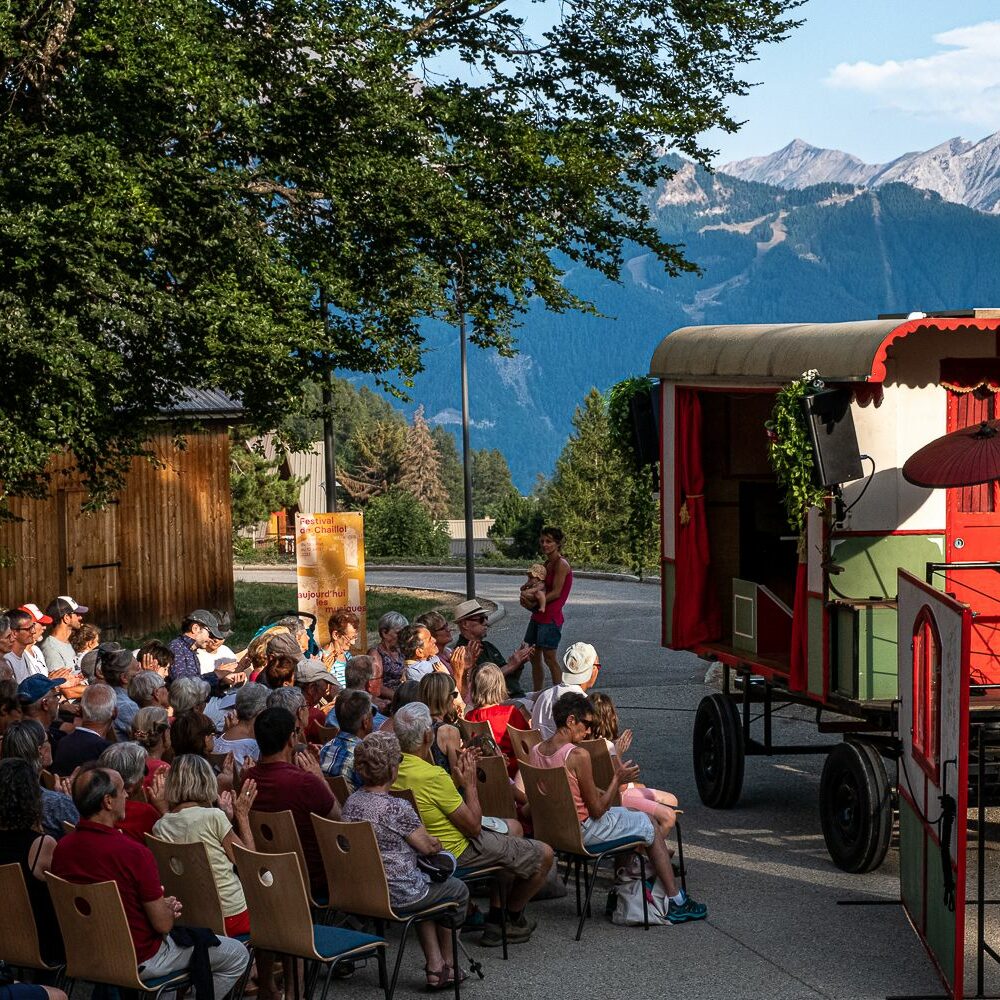)
